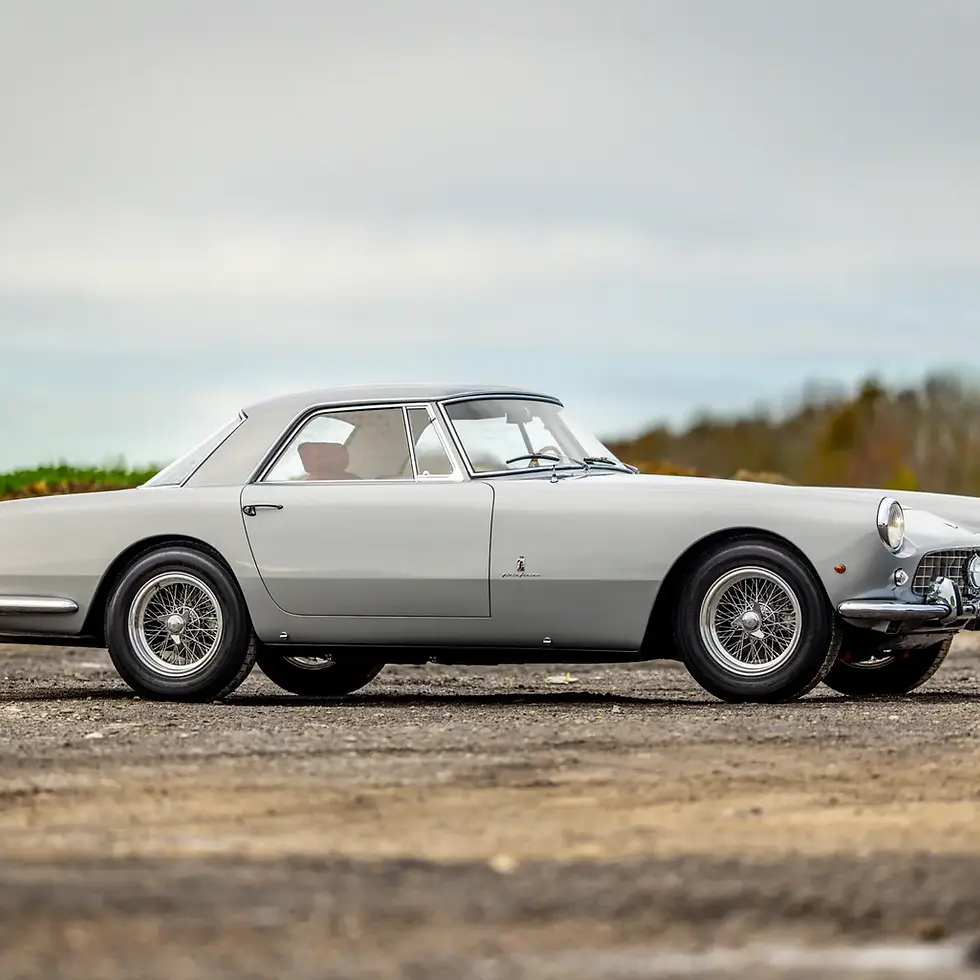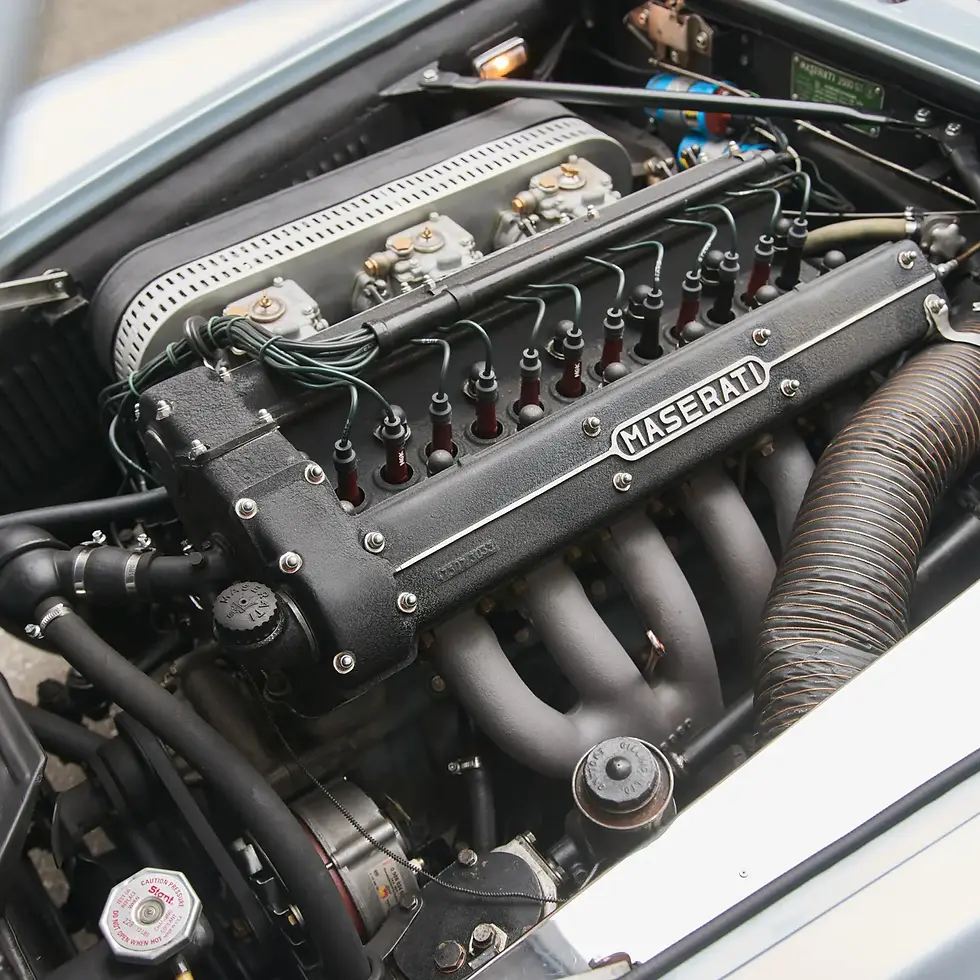Barely requiring an introduction, the Ferrari F40 set new benchmarks in design, engineering, and performance while commemorating Maranello’s 40th anniversary. Developed from the revered 288 GTO, the model was built upon a steel tube-frame chassis with four-wheel double-wishbone independent suspension, coil-over Koni shock absorbers, and four-caliper ventilated disc brakes. It was clothed in wedge-styled, wind-tunnel-proven coachwork woven from Kevlar and carbon fiber to a design by Pininfarina.
Weight-saving features such as cloth upholstery on plastic-composite racing seats, pull-strap door releases, drilled pedals, and Perspex windows maximised the potential of a new 2.9-litre twin-turbocharged V-8 equipped with IHI turbochargers and Behr intercoolers. European-spec cars developed 478 PS and 577 Nm of torque, the potent Tipo F120A engine was capable of launching the F40 to 100 km/h from standstill in just 4.1 seconds and achieving a top speed of 324 km/h. Initially earmarked for a relatively low production run of 400 cars, the popular F40 was ultimately built in a quantity of 1,315 examples, and the model today remains one of Maranello’s most iconic creations, appealing to supercar enthusiasts and Ferrari purists alike.
This beautifully presented F40 benefits from a life of modest driving use and consistent upkeep that included at least one extended period of careful storage. According to a history report by marque expert Marcel Massini, chassis number 89385 completed assembly in May 1991, specified for the European market with instruments in kilometers, equipped with wind-up windows, and characteristically finished in Rosso Ferrari paint over an interior of Stoffa Vigogna upholstery.
As confirmed by a copy of a warranty card on file, the Ferrari was immediately delivered to its first owner of record, Roberto “Pupo” Moreno, a Brazilian racing driver who found marginal success during a three-decade career that included stints in Formula One, CART, and sports car racing. After only 18 months of ownership, Pupo had the F40 stored at the Maranello factory and offered it for sale. The berlinetta was then acquired by an enthusiast in Frankfurt am Main, Germany, and before long the car was stored for a further period at a local garage.
In July 2007 the Ferrari resurfaced when it was driven by Matthias Weiland at the Ferrari Racing Days event held at the Hockenheimring and in March 2011, Mr. Weiland displayed the car at the Techno Classica in Essen. A few months later, the F40 was sold to a French enthusiast residing in Brive-La Gaillarde, and it was one of 500 Ferraris invited for display at the Sport et Collection exhibition at the Circuit Le Vigeant in June 2013. After passing to an Italian enthusiast around 2015, the berlinetta was more recently acquired by the consigning owner. In September 2020, the seller took the F40 for servicing at Modena Cars SA in Geneva, Switzerland, and the work was completed by the following February. Both left and right fuel tanks were replaced, the fuel lines were refreshed, and other work was undertaken to ensure the supercar’s smooth running; the work totaled CHF 116,500, and the invoice can be viewed in this car’s history file. The odometer of the Ferrari displays 9,400 kilometres at the time of cataloguing.
Important stampings confirm that this F40 retains its matching-numbers body, chassis, engine, and gearbox. The F40 is documented with a report by marque expert Marcel Massini included in its history file, further to copies of the warranty booklet and service invoices from 2012 to 2020. Ideal for the marque enthusiast in search of a fine example of Maranello’s 40th anniversary supercar, this F40 is well suited for future display or driving enjoyment, beautifully exemplifying one of the most iconic models in the sports car pantheon.
Please note this lot has entered the EU on a temporary import bond, which must be cancelled either by exporting the lot outside of the EU on an approved Bill of Lading with supporting customs documentation or by paying the applicable VAT and import duties to have the lot remain in the EU.
Bitte beachten Sie, dass dieses Fahrzeug mit einer vorübergehenden Einfuhrgenehmigung in die EU eingeführt wurde, die entweder durch die Ausfuhr des Fahrzeugs aus der EU mit einem genehmigten Frachtbrief und den entsprechenden Zollunterlagen oder durch die Zahlung der geltenden Mehrwertsteuer und Einfuhrzölle aufgehoben werden muss, damit das Fahrzeug in der EU verbleiben kann.


































































